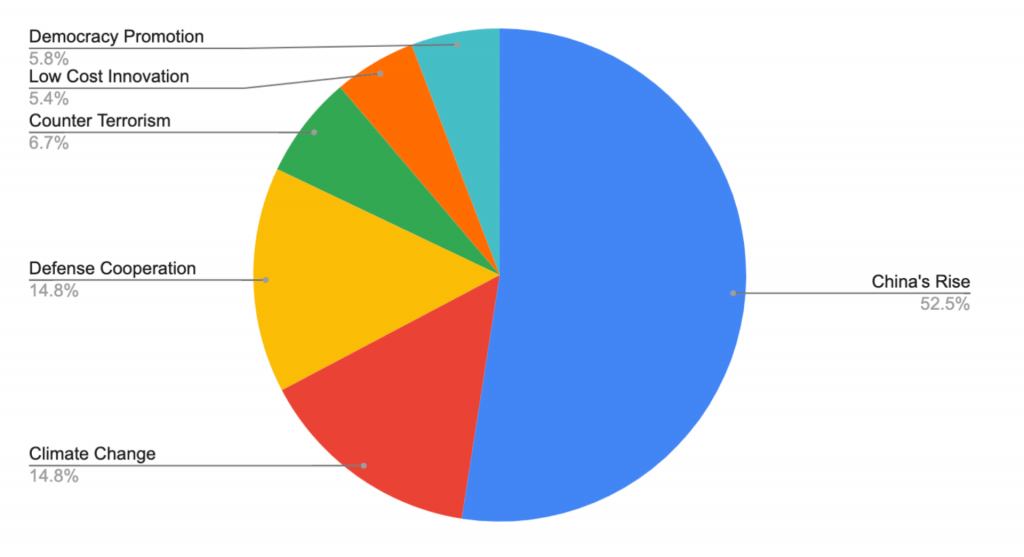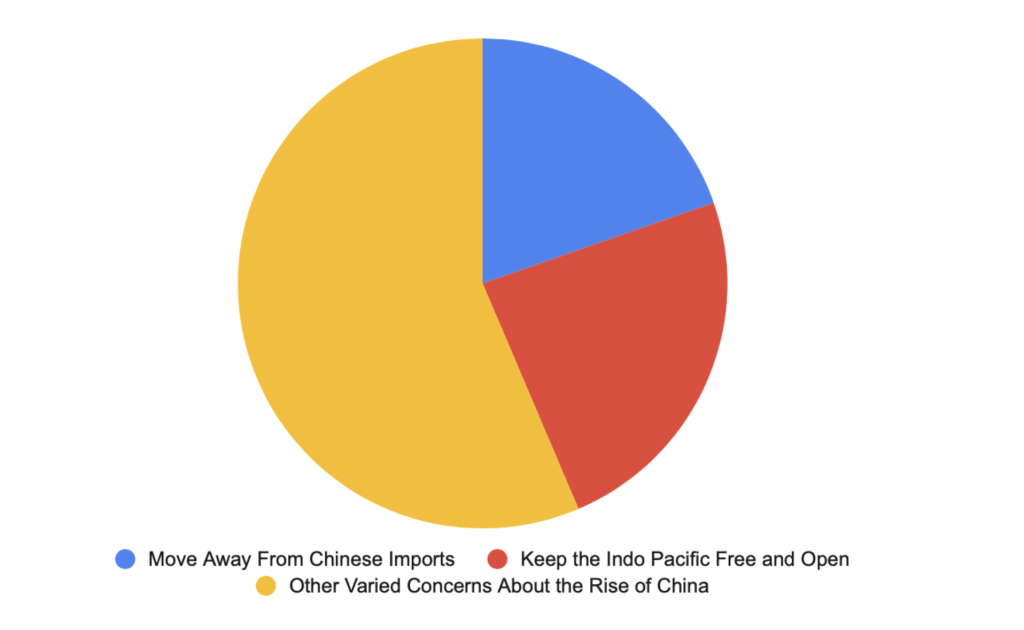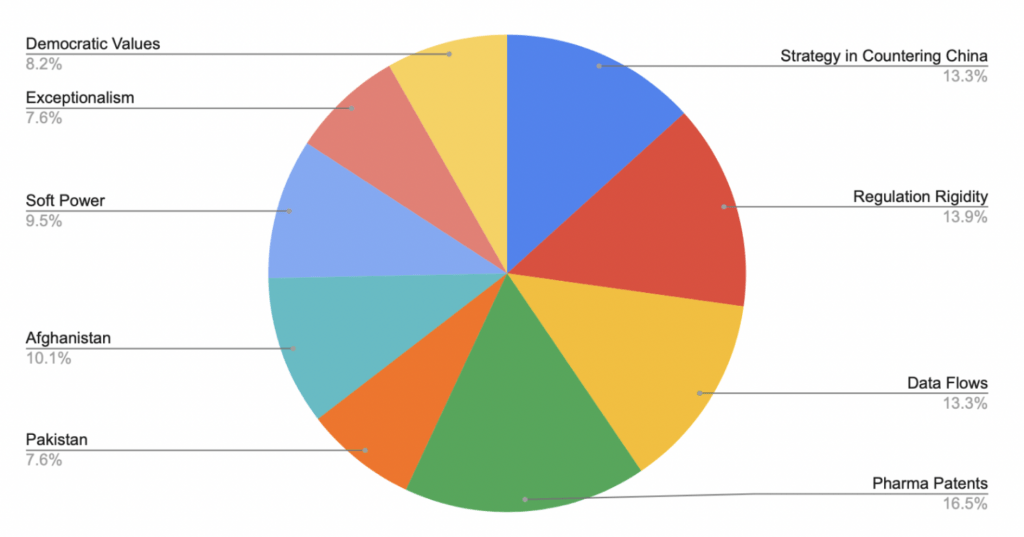February 14, 2023
In January 2023, a little-noticed naval exercise took place between the U.S. and Sri Lanka in the strategically located Trincomalee port and Mullikulam base in the Indian Ocean. The annual bilateral CARAT Sri Lanka exercises have been long-standing, but this year, Japan’s Maritime Self-Defense Force joined them for the second time after its initial participation in 2021. This came right on the heels of India sending the INS Delhi to dock at Trincomalee and providing training for the Sri Lankan Navy. These actions come four months after the controversial Chinese docking of a surveillance ship at Hambantota port in the midst of Sri Lanka’s historic economic and political meltdown in 2022.
Japan’s increasing involvement in the Indian Ocean will have a deep impact on the interests of its Quad partners, especially India. While Japan has been a traditional development aid partner in the region, its newest role suggests a leading strategic edge. What does Japan’s strategic edge in the Indian Ocean Region (IOR) look like? And to what extent is it characterized by a partnership with India versus a more unilateral approach?
The Race for Ports in the Indian Ocean
Sri Lanka
Japan’s strategic outlook on the Indian Ocean may be best reflected in how it participates in port and port infrastructure development. China took an early lead in constructing ports in the Indian Ocean Region ahead of both Japan and India. The latter two have been playing catch-up since 2010. Given Japan’s greater capital, resources and a better reputation for building and delivering quality infrastructure, Tokyo is in a more advantageous position to compete than India. India, however, brings strong historical experience working closely with key states like Sri Lanka and Bangladesh that could add value for Japan.
Tokyo’s sweeping new National Security Strategy, released in December 2022, points to China’s rising assertiveness in the Indo-Pacific as Japan’s “greatest strategic challenge.” In turn, Japan’s National Defense Strategy further notes that it must “deepen bilateral and multilateral defense exchanges” and will prioritize “the importance of stable use of sea lane and an energy and economic perspective” with coastal Indian Ocean states. Japan has been increasing its port investment portfolios across the Indian Ocean in recent years. Its major investments include Sri Lanka, Bangladesh, and Myanmar. Sri Lanka is where Japan is poised to gain the most, with unexpected opportunities since the economic and political crises hit the island nation last year.
That said, the way forward in Sri Lanka has not been easy for Japan. After receiving approval for the Colombo Port East Container Terminal (ECT) project in 2019, Japan and India were dismissed two years later in what amounted to a high-profile rebuke. The government of President Maithripala Sirisena-Prime Minister Ranil Wickremesinghe had signed an MOU with Japan and India to develop the Colombo terminal jointly. The operating company was to be 51% owned by the government, with the remainder held by Japan and India. When a new government led by the China-friendly Gotabaya Rajapaksa unceremoniously took over in 2021, the decision was reversed, allowing the state-run China Harbor Engineering to develop the East Container Terminal. Initially, Rajapaksa had indicated that there would be no change, only to change his mind. Caught by surprise, this unilateral move was decried by Japan and India but without effect, even though nearly 70% of the transshipment business through ECT is linked to India. This setback came on the heels of the handover of Hambantota Port to China in 2017 and the construction of the Colombo International Container Terminal (CICT) by China in 2011, where China Merchants Port Holdings has majority stakes.
The dramatic fall of Rajapaksa in 2022 and the political turbulence saw the return of a more even-handed government under Wickremesinghe. This government has wasted little time firming up another contract to Japan and India, this time for a new Colombo West Terminal project. This project will involve a yet-to-be-announced Japanese investor and India’s Adani Ports and Special Economic Zones (APSEZ). It will allow India and Japan to hold an 85% stake in this project under a build-operate-transfer schema for 35 years. While not generally viewed as strategic as the ECT, it is next to China’s activity in Colombo port. It was at the Colombo International Container Terminal that China docked a submarine in 2014, causing much consternation in India.
Japan’s willingness to persist and ride the waves to acquire a port project in Sri Lanka points to the high level of commitment to gain a stronger foothold in the IOR. Apart from Colombo and Hambantota ports in Sri Lanka’s southwest and south, respectively, is the even more strategic Port of Trincomalee located in the northeast of the country within the Bay of Bengal. Trincomalee is the world’s fifth-largest natural harbor and one of the few natural harbors deep enough to easily accommodate submarines. Some view it as the second-best natural harbor in the world after Sydney.
The Bay of Bengal holds significance as the link between the Indian and Pacific Oceans; it is the fulcrum of the Indo-Pacific. More than 80 percent of Japan’s oil imports pass through the Bay of Bengal. If there is a priority for Japan (and India) in Sri Lanka, it would be to prevent China from establishing a permanent presence elsewhere on the island, especially Trincomalee. Trincomalee has a major Sri Lankan naval base and an air base. Still, given its low population, distance from the capital, and proximity to areas in conflict during the decades-long civil war, it has remained underdeveloped. In mid-2022 however, the Chairman of Sri Lanka Ports Authority announced plans to develop Trincomalee as an industrial port and to call for an “Expression of Interest” from investors to utilize the port premises and up to 2,400 hectares of surrounding land.
While plans to develop Trincomalee have surfaced from time to time, it was apparently only in December 2021, after a Japanese company established a ship repair and rebuilding facility there, that Colombo got serious. In joint operations with Japanese Onomichi Dockyard, Colombo Dockyard founded a rapid response afloat service in Trincomalee Port to cover a gap in Sri Lanka’s coverage. Another Japanese company, Tokyo Cement, had already built a state-of-the-art cement manufacturing facility which began commercial operations in 2017. Tokyo Cement’s products, trusted for decades for their superior strength and quality, also incorporated sophisticated equipment from India and Germany in this project. Given Hambantota port’s poor performance, the idea of developing Trincomalee has been met with some skepticism. However, supporters can point to a 2020 Asian Development Bank study commissioned by the Japanese which concluded that the Trincomalee harbor had substantial benefits to offer, including catering to increasing maritime cargo trade from India’s eastern seaboard and Bangladesh and Myanmar.
Bangladesh, Myanmar, and the Greater Indian Ocean
Bangladesh’s primary port is the Port of Chittagong. Problems have long plagued Chittagong, with the World Bank ranking it the least efficient major port in Asia. It handles nearly 98% of Bangladesh’s containerized trade with the rest of the world. Japan has recognized this problem and has invested in the construction of Matarbari Port to alleviate the burden from Chittagong. Estimated to be completed in 2026, Matarbari port is also envisioned as a transport option for Indian goods from India’s sensitive northeast. “Key infrastructure projects funded by Japan like the Matarbari port in Bangladesh are expected to provide an entry point for Indian business to establish a foothold in Southeast Asia,” says VP of Japan International Cooperation Agency (JICA), Nakazawa Keiichiro. Matarbari port, although not an Indian investment, is indicative of India and Japan’s close cooperation and shared goals.
In Myanmar, both Japan and India had planned major projects, despite the country’s troubled politics. India’s APSEZ had plans to build and operate an international container terminal in Yangon port, and Japan had planned to invest in the Thilawa SEZ surrounding Yangon port. While Japan’s SEZ in Thilawa and investments into Yangon port have come through, they have encountered delays and an increased investment risk due to sanctions on the Tatmadaw government. These sanctions have led to the cancellation of Indian APSEZ’s Yangon investment. Japan remains susceptible to Myanmar’s political instability.
Meanwhile, Japan continues to be a leader in developing critical Southeast Asian infrastructure, especially in Indonesia, which lies astride the strategically important Strait of Malacca. Japanese companies have been awarded contracts for the construction and operation of Patimban Port in Java. Indonesia’s primary port in Jakarta, Tanjung Priok Port, handles more than 50% of Indonesia’s transshipments. As President Joko Widodo looks to reevaluate Jakarta’s centrality in Indonesia, Japan has started construction in Patimban, which is expected to be completed in 2027. JICA extended Official Development Assistance (ODA) loans to Indonesia for this project in 2017 and again in 2022, making it Japan’s largest port investment project in ASEAN.
In November 2022, in the small town of Saumlaki in the Maluku Islands, construction on a Japanese-funded fishing port began. Saumlaki has a small port and is not used for containerized traffic but is close to major fishing spots and Japan intends to turn it into a regional fishing hub. In 2018, Japan financed the improvement of Saumlaki and five other minor fishing ports throughout Indonesia’s peripheral islands. Through developing fishing ports in Indonesia, Japan also seeks to combat persistent issues such as illegal, unreported, and unregulated (IUU) fishing and the lack of coastal infrastructure on smaller islands in the littoral waters of Southeast Asia. That Japan finds it necessary to invest in projects as big as Patimban and as small as Saumlaki, indicates a thorough investment portfolio in Indonesia and across the Indian Ocean.
Further away, Japan has provided Madagascar with ODA loans worth more than $340 million to expand its largest port, Toamasina Port. JICA has also no doubt considered the strategic location of Madagascar in the Indian Ocean. Near the islands of Comoros, Mauritius, and the Seychelles and close to the African coast, Toamasina port can serve as a regional hub for the Southern Indian Ocean.
The Strategic Shadow
Taken in isolation, Japan’s forays into port infrastructure in the Indian Ocean are unremarkable. After all, economic connectivity in the Indo-Pacific is a priority for the region and major powers. However, the backdrop to Japan’s stepped-up port development activity is increasingly strategic and cannot be easily delinked from the broader competition for influence with China. Japan’s growing joint projects with India in the Indian Ocean region indicate convergent strategic challenges and responses.
Indeed, we can see Japan as a critical linchpin for the Quad and the Indo-Pacific partnerships: working closely with its Quad partners often minus India in the Western Pacific and aligning closer and closer with India in the Indian Ocean. Together with India or separately, Japan’s significantly rising profile in critical port development is adding new momentum to the politics of the Indian Ocean. Whether this will lead to strengthening a “Free and Open Indo-Pacific” or more great power rivalry is likely to depend on how China’s ambitions take shape in the Indian Ocean.
By Deepa M. Ollapally, Research Professor of International Affairs and Director, Rising Powers Initiative and Satvik Pendyala, Research Assistant, Rising Powers Initiative, Elliott School of International Affairs, George Washington University.



